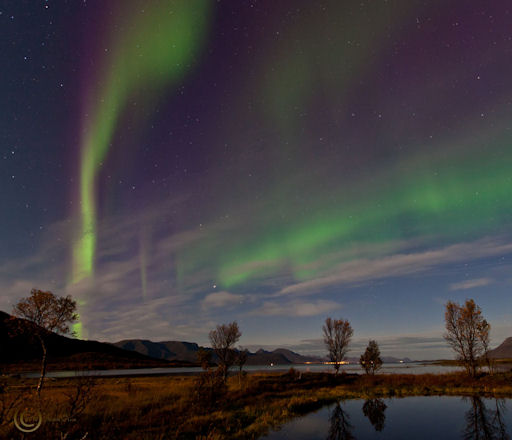SLIGHT CHANCE OF FLARES: NOAA forecasters estimate a 20% chance of M-class solar flares today. The most likely source would be sunspot AR1575, which is facing Earth squarely-enough for geoeffective eruptions. Solar flare alerts: text, voice.
POLAR LIGHTS: A medium-speed (~450 km/s) solar wind stream is brushing against Earth's magnetic field, sparking intermittent auroras around the Arctic Circle. Frank Olsen photographed these colorful streamers over Sortland, Norway, during the early hours of Sept. 27th:

"The auroras shone right through the bright moonlight," says Olsen. "It was a nice [little outburst]."
The display was not caused by a geomagnetic storm, but at this time of year no storm is required. For reasons researchers do not fully understand, equixoxes favor auroras. During the nights of early autumn, even a gentle gust of solar wind can ignite colorful lights at high-latitudes. Browse the gallery for current images: